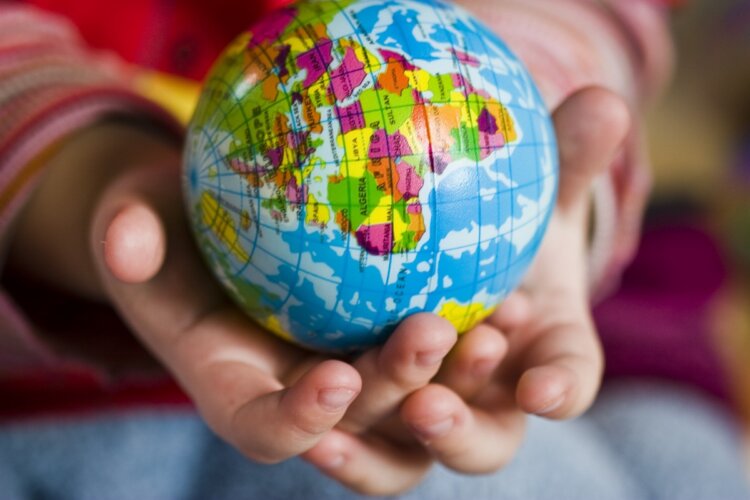
The man who unraveled black holes can’t be wrong, can he?
We now have the technology to destroy the planet on which we live, but have not yet developed the ability to escape it. Perhaps in a few hundred years, we will have established human colonies amid the stars, but right now we only have one planet, and we need to work together to protect it.
—Stephen Hawking, 2016
Protecting our one planet to make it sustainable for humanity and other living things is a life goal. And it’s hard. With kids, it can feel harder. At least it does with my own kids sometimes.
By asking good questions though, I can get them to understand the basic principles of “reduce, reuse, recycle, and recover,” without using those terms. They understand that buying juice boxes isn’t the greatest choice —on many levels— and that they’re disposable one-offs destined for a murky landfill.
They’re a little fuzzy on the science behind it all, but conceptually, they’re there.
They experience my daily quest to reduce the amount of stuff that enters our house and the amount of stuff they encounter everyday. They see me reuse as much as possible—we rarely buy anything new, try to eliminate single-use disposables, and share resources with others. They help me organize the recycling and understand the idea of recovering resources for future use. Leading by example is a key way to help everyone become more environmentally friendly.

If you’re looking for ways to go a little greener with your kiddos this Earth Day, which is April 22, consider these 12 easy-to-enact ideas:
- Use less paper. According to the Paperless Project, Americans consume over 700 pounds of paper per person per year, about 16 percent of which winds up in landfills. While it’s still a better alternative to plastic, it contributes to our production of waste.
- Teach your kids about paper recycling with this really cool Sesame Street clip, where a young girl narrates the journey of paper from recycling bin to new paper. My son reported, “Paper is a lot of work,” after watching it. Bingo.
- Use and re-use cloth napkins at meal times, provided they’re not too gross. Wash once a week in a cold wash. My kids re-set the table after dinner every night and always ask about napkin status—they’re usually good for at least two nights, unless we have red sauce.
- Reuse what ends up in the recycling bin for kid art. The backs of junk mail envelopes, magazines, and cleaned and dried milk containers are way more fun than what I can buy — and more importantly, they reduce my kids’ desire to buy more.
 Author’s children working on their recycled art Alyssa Walker
Author’s children working on their recycled art Alyssa Walker - Attempt handkerchief use. Disclaimer: This one’s really hard. Sometimes, like during cruel bouts of family illness, I buy (recycled) paper tissues. There’s definitely a hygiene issue here.
- Use dishrags instead of paper towels. Keep a stash in a bucket below your sink. Wash them once a week in a cold wash and air dry them. Show your kids where you keep the bucket and what to do when they need to clean up a spill.
- Use less gas by limiting the amount you drive. Carpool or take public transportation when possible. My kids love looking at maps and timetables. We make a game of figuring out how we’re getting to where we want to go. Weird but true.
- Teach your kids about air pollution and climate change with NASA’s interactive ClimateKids site. Learn about carbon, renewables, non-renewables, the Industrial Revolution, and why we’re in a such a pickle right now.
- Limit the consumption of all plastic in the house. Try not to feel too defeated.
- Bring your own reusable shopping bags to the store. Give your kids their own. My kids love the sense of ownership and responsibility they feel when they help me buy groceries.
- Impose a household and/or personal ban on single-use plastic. What’s that, you ask? Disposable plastic one-offs that usually aren’t recyclable and end up in our landfills, oceans, rivers, streams, and anywhere else they find space to pollute: party cups, plastic bags, straws, bottled beverages, food containers… the list goes on.
- Use recyclable stainless steel water bottles and coffee mugs. Quick note: most coffee shops will give a small discount if you bring your own mug—and you get to model some environmentally sustainable behavior for your kids while simultaneously treating yourself to a cup of coffee. Woot! We’re a KleanKanteen family but have heard good things about HydroFlask, too. Check their websites for occasional flash sales. No one paid me to write that.
Bottom line? Do the best you can.
If you have more ideas, please share them below in the comments.


Grok Nation Comment Policy
We welcome thoughtful, grokky comments—keep your negativity and spam to yourself. Please read our Comment Policy before commenting.